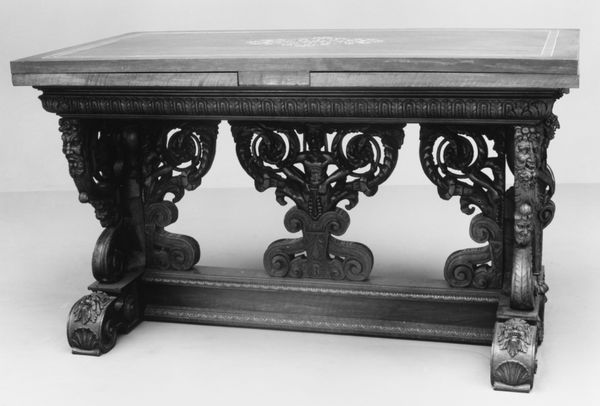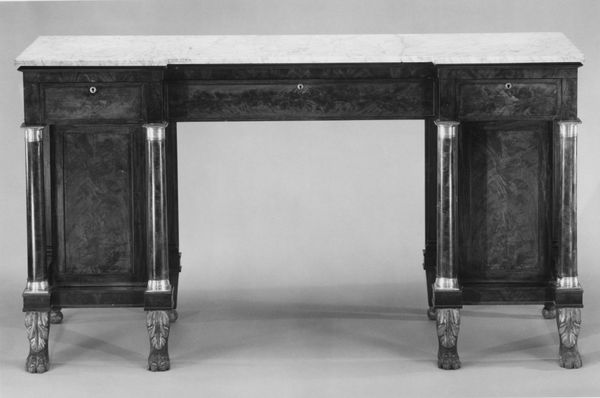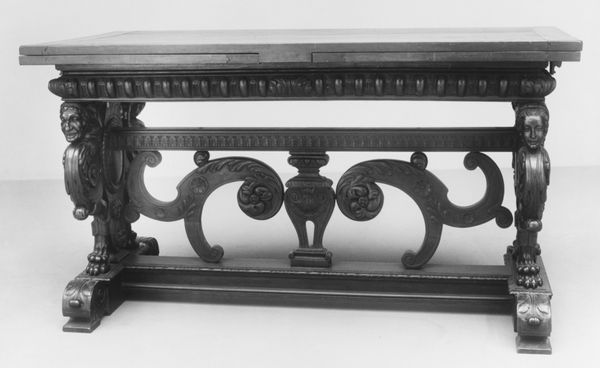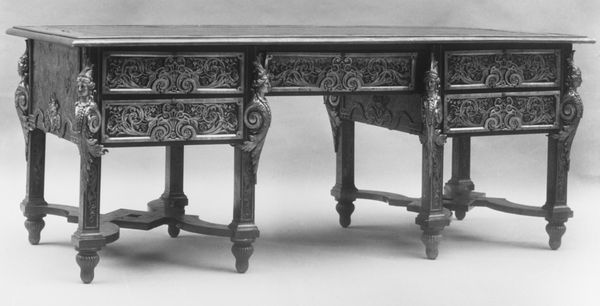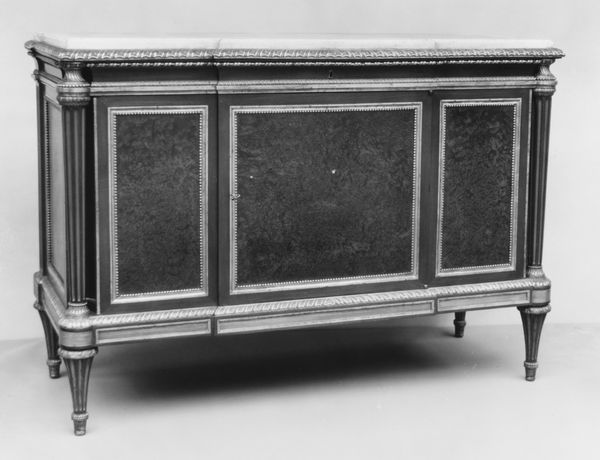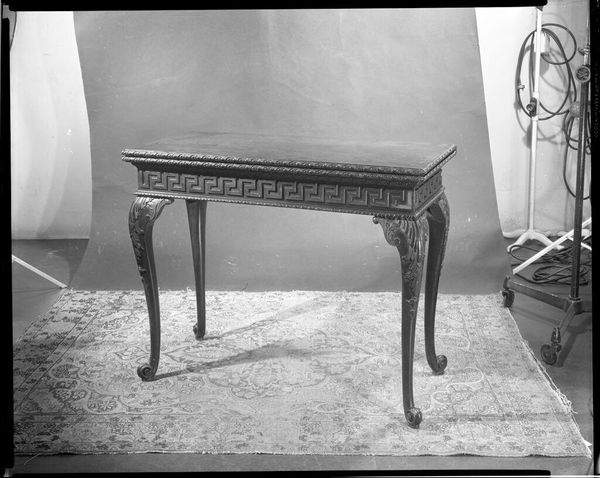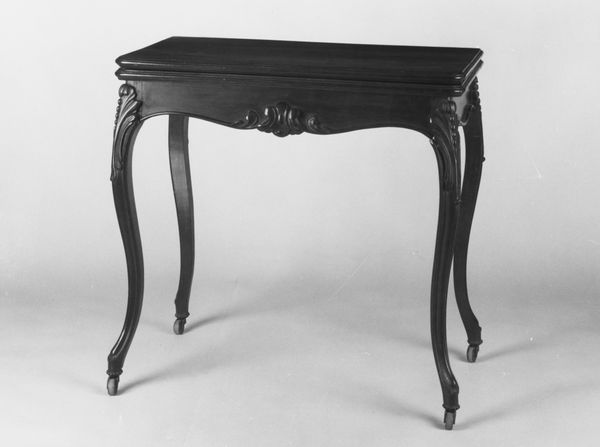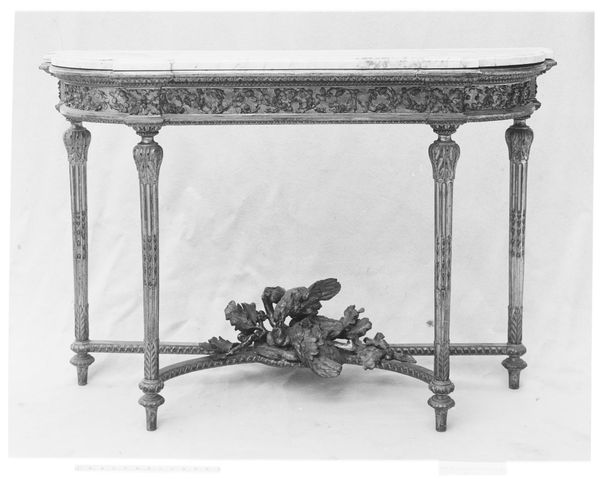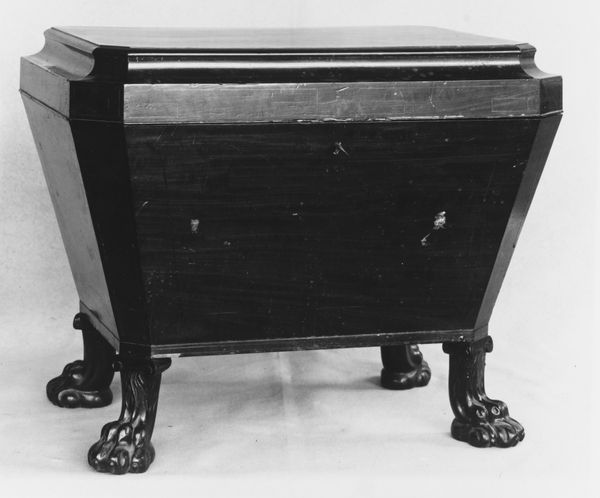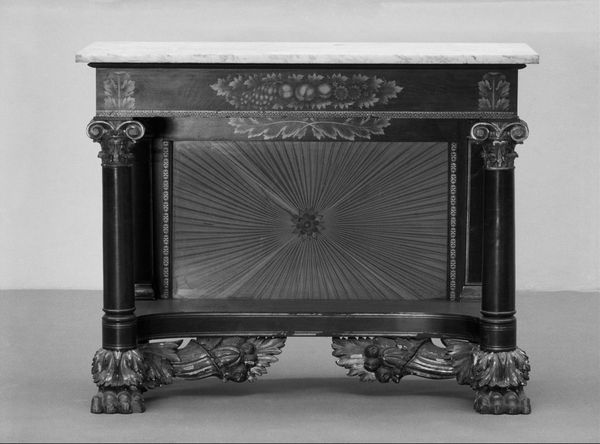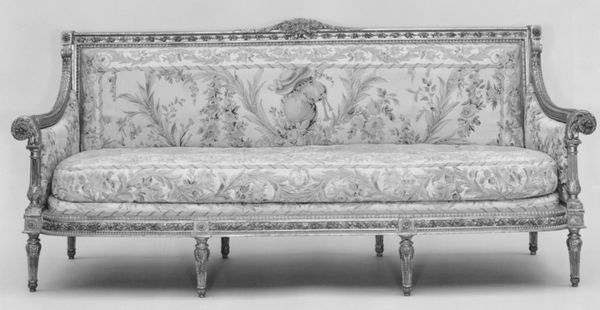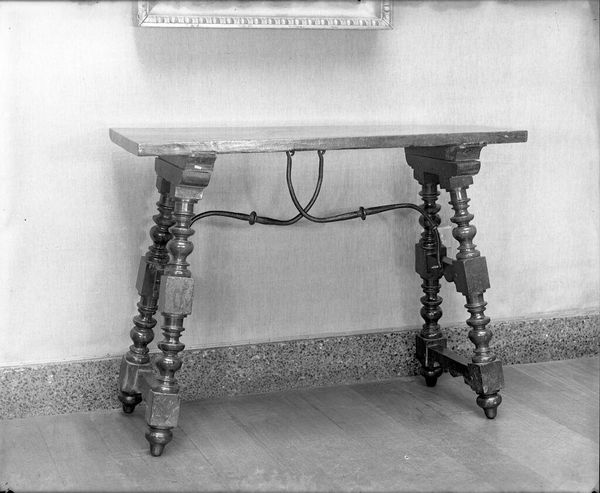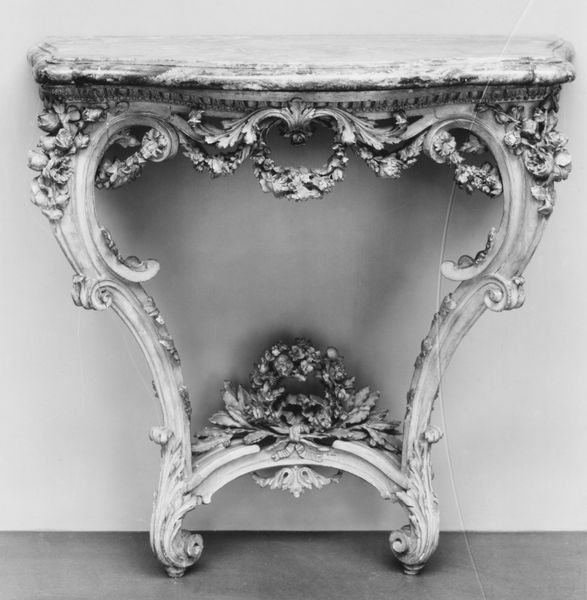
metal, wood
#
neoclacissism
#
metal
#
furniture
#
wood
#
decorative-art
Dimensions: Overall: 33 3/4 × 65 1/4 × 23 in. (85.7 × 165.7 × 58.4 cm)
Copyright: Public Domain
Editor: Here we have a side table, also called a console desserte, crafted around 1780 to 1790 by Bernard Molitor. It's a neoclassical piece composed of wood and metal and held at the Metropolitan Museum of Art. I'm struck by its symmetry and the ornate details. What socio-political narratives do you think it embodies? Curator: Good question. Beyond the apparent elegance and refined craftsmanship, this piece whispers of the complex social hierarchy of its time. Think about it – Neoclassicism wasn’t just an aesthetic; it was a political statement, a return to perceived "purity" and order in contrast to the Rococo excesses associated with the aristocracy prior to the French Revolution. The very act of possessing such an object reinforced class distinctions and conveyed power. Editor: So, it's more than just furniture; it's a symbol of status? Curator: Precisely. This side table would have been commissioned for an elite clientele deeply invested in projecting an image of authority, culture, and taste. These objects upheld power structures. Who had access to this type of artistry, and, just as importantly, who didn’t? Editor: I never really thought about furniture like that! The ornate details seem less innocent now. I mean, you could almost see it as… oppressive, knowing who paid for it, versus those who likely couldn't even dream of it. Curator: It highlights disparities, absolutely. Think of the exploitation of resources and labor required to produce it. Looking at decorative art this way gives us access to a critique of luxury that invites a discussion of today’s social issues as well. Editor: Wow, that's really changed how I see the table. Thank you. It really speaks to the power of looking at an artwork within its proper historical framework, not just as something pretty, but also as a reflection of broader power dynamics and inequalities. Curator: Exactly! Keep challenging the dominant narratives and asking those uncomfortable questions. That is how we, as stewards of history, are supposed to view the world!
Comments
No comments
Be the first to comment and join the conversation on the ultimate creative platform.
